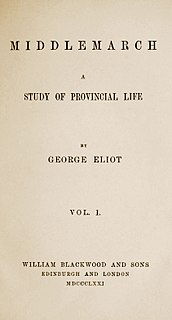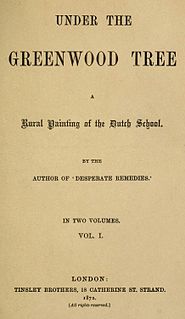 W
WA Dog of Flanders is an 1872 novel by English author Marie Louise de la Ramée published with her pseudonym "Ouida". It is about a Flemish boy named Nello and his dog, Patrasche, and is set in Antwerp.
 W
WErewhon: or, Over the Range is a novel by Samuel Butler which was first published anonymously in 1872, set in a fictional country discovered and explored by the protagonist. Butler meant the title to be understood as the word "nowhere" backwards even though the letters "h" and "w" are transposed. The book is a satire on Victorian society.
 W
WA Flat Iron for a Farthing (1872) is a book by Juliana Horatia Ewing (1842-1885) and consists of childhood reminiscences of the only child of a widowed father. It was one of the author's most popular books.
 W
WThe Maid of Sker is a three-volume novel that was written by R. D. Blackmore and published in 1872. The novel is set in the late 18th century and is about an elderly fisherman who unravels the mysterious origins of a foundling child who is washed ashore on the coast of Glamorganshire, South Wales. It was published subsequent to Blackmore's Lorna Doone, although he had begun writing The Maid of Sker 25 years earlier. Blackmore considered The Maid of Sker to be his best novel.
 W
WMiddlemarch, A Study of Provincial Life is a novel by the English author Mary Anne Evans, who wrote as George Eliot. It first appeared in eight instalments (volumes) in 1871 and 1872. Set in a fictitious English Midland town in 1829–1832, it follows distinct, intersecting stories with many characters. Issues include the status of women, the nature of marriage, idealism, self-interest, religion, hypocrisy, political reform, and education. Despite comic elements, Middlemarch uses realism to encompass historical events: the 1832 Reform Act, early railways, and the accession of King William IV. It looks at medicine of the time and reactionary views in a settled community facing unwelcome change. Eliot began writing the two pieces that formed the novel in 1869–1870 and completed it in 1871. Initial reviews were mixed, but it is now seen widely as her best work and one of the great English novels.
 W
WPoor Miss Finch (1872) by Wilkie Collins is a novel about a young blind woman who temporarily regains her sight while finding herself in a romantic triangle with two brothers.
 W
WThe Princess and the Goblin is a children's fantasy novel by George MacDonald. It was published in 1872 by Strahan & Co., with black-and-white illustrations by Arthur Hughes. Strahan had published the story and illustrations as a serial in the monthly magazine Good Words for the Young, beginning November 1870.
 W
WThrough the Looking-Glass, and What Alice Found There is an 1871 novel by Lewis Carroll and the sequel to Alice's Adventures in Wonderland (1865). Alice again enters a fantastical world, this time by climbing through a mirror into the world that she can see beyond it. There she finds that, just like a reflection, everything is reversed, including logic.
 W
WUnder the Greenwood Tree: A Rural Painting of the Dutch School is a novel by the English writer Thomas Hardy, published anonymously in 1872. It was Hardy's second published novel, and the first of what was to become his series of Wessex novels. Critics recognise it as an important precursor to his later tragic works, setting the scene for the Wessex that the author would return to again and again. Hardy himself called the story of the Mellstock Quire and its west-gallery musicians "a fairly true picture, at first hand, of the personages, ways, and customs which were common among such orchestral bodies in the villages of [the 1850s]."